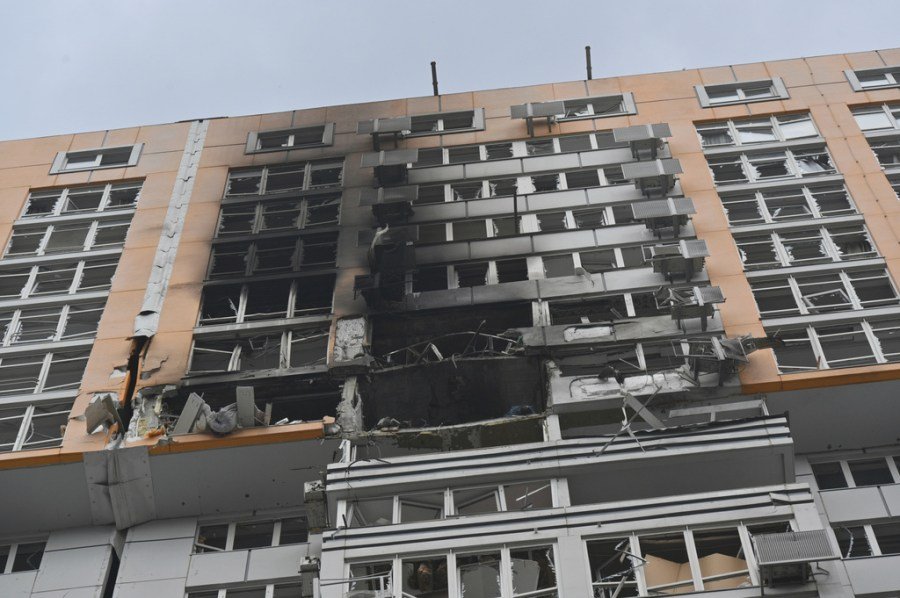
With no sign of progress in peace talks and President Trump dragging his feet on implementing new sanctions, Russian President Vladimir Putin feels that he can press on and try to break Ukraine this summer. In recent months, Trump has repeatedly extended timelines to accommodate Putin, even expressing surprise at Putin’s bombing of areas with children and calling him “crazy.”
Ukrainian President Volodymyr Zelensky has pushed back on claims of Russian momentum, calling it a “Russian narrative” meant to weaken Western resolve. He warned that Moscow’s interest in the U.S.-led peace talks is not genuine but a ploy to avoid new sanctions and isolate Ukraine from its partners.
Defense Secretary Pete Hegseth recently told U.S. lawmakers that next year’s budget will include a “reduction” in aid to Ukraine, without providing details. Oleksandr Merezhko, head of Ukraine’s foreign affairs committee, warned that any cuts weaken Ukraine’s defense and benefit Russia.
However, this is exactly what Putin is hoping for from Trump. Eventually, Putin believes the U.S. will grow weary of opposing Russia and lose interest. With the U.S. bombing of Iranian nuclear sites over the weekend, Trump’s focus will likely drift even further from Ukraine.
Russia has now amassed around 50,000 soldiers around Ukraine’s Sumy region and started a new offensive in the sector. This is likely to distract Kyiv from Donetsk Oblast, the main objective of Moscow’s summer offensive.
Ukrainian authorities admitted that Russia has already captured a few settlements in Sumy, but Kyiv has made progress in pushing back. However, the city will soon be within range of Russian drones, which will begin to target civilians in a new “human safari” like in Kherson.
Meanwhile, North Korean soldiers are fighting on European soil, gaining experience in modern warfare, with Russia providing them with missile telemetry data to improve their strike accuracy. At the same time, Iran and Russia have established joint drone factories and are working closely to scale Russia’s production capacity.
China’s involvement is growing, too. Reuters reported that Chinese military officers, with approval from Beijing, have been in Russia studying battlefield lessons and tactics.
The China-Iran-Russia axis of cooperation is helping the Russians advance technologically, closing in on Ukraine’s advantage that it had since 2022. Ukraine is sounding the alarm about this expanding axis. Zelensky said Russia “seeks to produce up to 500 drones per day.”
He also noted that China has halted drone sales to Ukraine, while continuing to supply Russia, even allowing Chinese representatives to support drone production inside Russia. Western technology and components are still finding their way into Russia’s drones and missiles.
Russia’s deepening partnership with Iran has enabled Russia to produce Iranian-designed Shahed drones inside Russia. Now, with new U.S. aid unlikely to come in the future and Kyiv running out of air defense, Russia will continue to scale its drone attacks on Ukrainian cities.
Kyiv will need to continue prioritizing where its air defenses are put between the frontline and to protect its cities.
Russia believes mass production is the key to victory — and is leveraging state-backed big business and engineering power to scale its drone capabilities. This is already noticeable with Russia’s advantage in fiber-optic drones, which is backed by Chinese industry. Fiber-optic drones were a key reason for Russia’s success in Kursk in recent months.
These fiber-optic drones will continue to expand the kill zone along the front and more easily target logistical routes. They will continue to expand their range. Ukraine has recently established a drone wall to contain Russia’s meatgrinder assaults. But Russia has been adapting and changing tactics.
Russia is also innovating tactically on the ground. The Institute for the Study of War highlighted how Russia continues to integrate motorcycles into offensive operations in Ukraine to counter Ukraine’s effective drone tactics. The suicidal motorcycle attacks are meant to overwhelm Ukraine’s defenses.
Yet these innovations remain part of Russia’s meatgrinder approach. They are likely to continue taking at least 1,000 casualties a day or more this summer.
Andrii, a drone pilot from the 109th Territorial Defense Brigade, told me, “Their tactics are changing. On motorcycles, they can cross kill zones faster and more easily maneuver around destroyed vehicles. They’re increasing the speed of their personnel.” He added, “It’s also easier to avoid mines with motorcycles and there’s a lower chance of triggering one.”
The main thrust of Russia’s offensive will likely continue to be Pokrovsk and Kostyantynivka. At a minimum, Moscow would hope to take Donetsk Oblast. Russia has brought its best drone units to this area of the front, signaling its key aim of the summer offensive.
Among its biggest challenges, Kyiv will need to sustain its mobilization efforts in the face of Russia’s manpower advantage and continue scaling its drone production to feed the growing needs of its “drone wall.”
Russian advances between January and April 2025 were 45 percent slower than in late 2024, while casualty rates dropped by only 10 percent. The Kremlin seems fine with this math and will continue sacrificing the masses of its soldiers for marginal gains.
As a result, it’s shaping up to be a test of Ukraine’s drone wall versus Russia’s meatgrinder assaults, paired with its growing technological advancements, backed by China and Iran.
With the Russian economy overheating, if the U.S. did enact sanctions against Russia, it would put Putin under greater pressure. Otherwise, the Kremlin believes it can prevail on the battlefield and peace remains more elusive than ever. Expect Moscow to go all-in this summer with unprecedented losses, as the dying empire is desperate to drag the world back into the 19th century.
David Kirichenko is an associate research fellow at the Henry Jackson Society.






